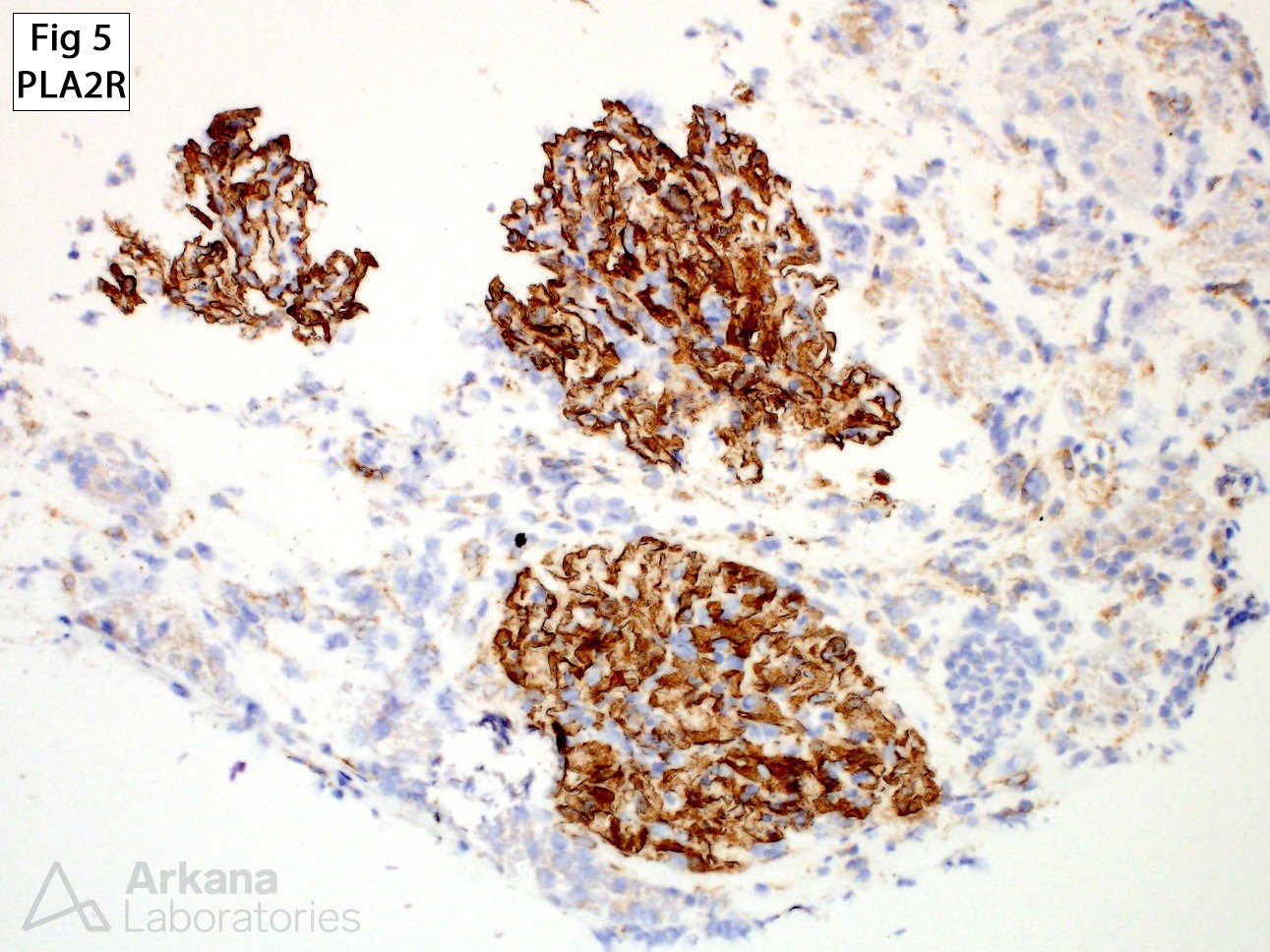The patient is a 57-year-old female, with a history of morbid obesity and persistent mild proteinuria (approximately 1 gm), who now presents with nephrotic syndrome and a UPCR of 10.5 g/g. Renal function is normal with a serum creatinine of 0.5 mg/dl. The biopsy shows marked glomerulomegaly with focal areas of perihilar segmental glomerulosclerosis (Fig 1 and 2). Additionally, the capillary loops appear mildly thickened, with frequent subepithelial fuchsinophilic deposits on trichrome stain and diffuse and global holes and spikes seen on silver stain (Fig 3). Immunofluorescence shows global capillary loop granular staining for IgG, C3, kappa, and lambda (Fig 4). Electron microscopy shows global subepithelial and intramembranous electron dense deposits (not shown). A PLA2R immunoperoxidase stain is globally positive within the glomerular deposits (Fig 5). The overall biopsy findings are consistent with a PLA2R-positive membranous glomerulopathy in a background of obesity-related glomerulopathy.
Quick note: This post is to be used for informational purposes only and does not constitute medical or health advice. Each person should consult their own doctor with respect to matters referenced. Arkana Laboratories assumes no liability for actions taken in reliance upon the information contained herein.






